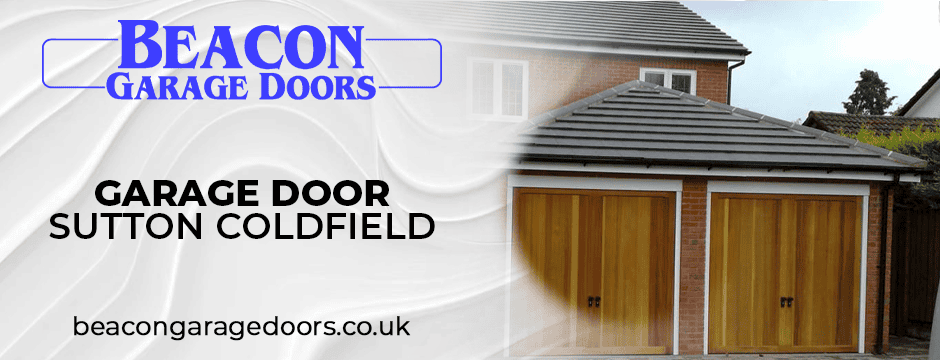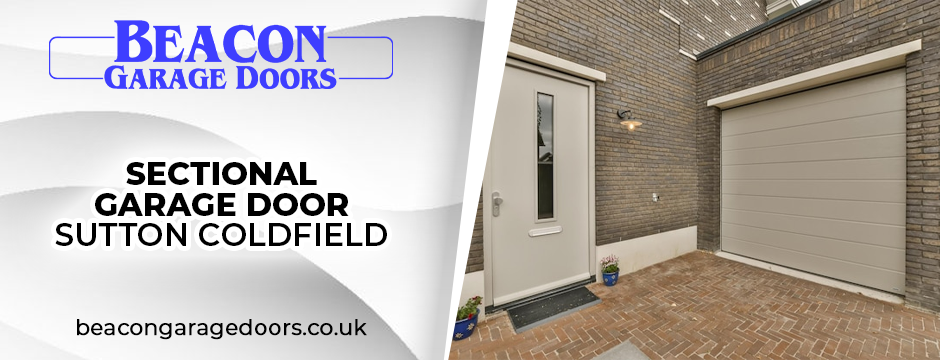In a quiet street of Sutton Coldfield, the last thing any homeowner wants is a loud, rattling garage door echoing through their neighbourhood at 11 pm. As noise complaints and strained neighbour relations rise, Beacon Garage Doors offers not just high quality installations but smart noise reduction solutions that elevate your property and preserve the peace.

When someone searches for “Garage Door in Sutton, Coldfield”, they are often looking not just for a replacement but for a door that works smoothly, reliably, and quietly. In today’s market, noise control is a differentiator. Let this guide help you understand how to reduce the sound of your garage door, built around materials, motors, seals, dampers, and smart installation. At the end, you’ll see how Beacon Garage Doors delivers not just a door, but a quiet upgrade.
Understanding the Noise: What Is Actually Causing the Sound?
Before addressing fixes, we need to identify how that noise is generated. The offender often lies in one (or more) of these areas:
- Structure-borne vibration: The garage door motor, tracks or rails vibrate and transmit sound through the building’s frame.
- Resonating panels: Thin metal sections act like a drum under motion or wind. Many homeowners report that insulation dramatically cuts down that “ping” or “oil can” effect.
- Friction or impact noise: Rollers rubbing on misaligned tracks, loose hardware rattling or hitting, or weather strips banging.
- Motor, chain or belt noise: The opener’s drive system, especially chain drives or loose belts, can contribute significant sound.
Once you know where the noise is coming from, you can choose targeted remedies. Below we break them down into materials, motors, seals, dampers, and installation techniques — all aimed at delivering a premium, quiet garage door experience.
Materials & Panel Design: Start with a Quiet Base
Your choice of door panel materials and internal structure gives you a head start at noise control.
1. Multi-layer insulated panels
Single steel skins can vibrate wildly under movement or wind. Double or triple skin, insulated panels reduce resonance by damping the panel vibrations. Many homeowners report that simply upgrading to a double-skin insulated door cuts audible noise significantly.
2. Use of composite or timber core layers
In some designs, a timber or composite core sandwiched between metal skins adds mass and damping. The more mass without undue weight, the better for silent operation.
3. Stiffeners and reinforcement
Reinforcing ribs, bracing, or internal stiffeners reduce panel movement and flex during opening or in wind, reducing the “ping” effect. Proper design ensures that the panel does not vibrate like a drum.
4. Choose panels with sound-absorbing inserts
Some manufacturers offer factory inserts—rubber, foam, or composite—within the panel’s cavity to further absorb sound energy. Ask your door supplier if these options are available.
At Beacon Garage Doors, we often specify doors with soundproof / acoustic panels so that when the door opens late in the evening, you hear a whisper, not a racket.
Motors, Drives & Vibration Isolation: The Heart of Quiet Operation
A noisy motor or drive system can spoil everything else you do well. Your choice and installation of the motor system can make or break the silence.
1. Pick a quiet drive mechanism
- Belt-drive or belt and rail systems are usually much quieter than chain-drive systems. Many forums and user reports confirm that swapping a chain drive for a belt drive produces dramatic noise reduction.
- Screw drive or direct drive openers may also offer quieter performance in certain contexts. Evaluate based on door weight, run length, and installation constraints.
- Jackshaft or wall-mounted motors can reduce overhead vibration that travels through attic or ceiling joists.
2. Motor mounting with isolation
Even a quiet motor can transmit vibration unless decoupled from the structure:
- Use anti-vibration rubber pads or mounts between the motor bracket and ceiling joists or support beams.
- Insert dense rubber, neoprene washers, or horse stall mat between brackets and structure to isolate vibration.
- In extreme cases, suspend the motor from spring or rubber hangers, similar to HVAC isolation.
3. Isolator kits for garage door openers
You can purchase isolation kits that go between motor assembly and ceiling mount. These kits absorb vibration and reduce the transmission of sound.
4. Maintain tight drive systems
A loose chain, slack belt, or worn gear will rattle and clang. Regular maintenance (tension checks, lubrication) is critical.
When we install motors at Beacon Garage Doors, we always pair them with vibration isolation hardware, especially in houses where rooms lie above or adjacent to the garage.
Weather Strips, Seals & Edge Noise Control
Even with a quiet door and motor, gaps or poor sealing let sound leak through. Thoughtful sealing is essential.
1. High-quality weather strips
- Use elastic rubber or EPDM seals rather than cheap vinyl strips. They damp impact and maintain seal under movement.
- Check perimeter seals (sides, top) for compression and alignment; replace if worn or cracked.
- Use a tight bottom seal: when the door closes, the bottom seal must press slightly against the threshold without dragging.
2. Sound-absorbing insert around edges
A soft foam or felt strip behind the stop moulding helps muffle slaps or bangs when panels press against frame.
3. Staggered sealing lips
Some advanced doors incorporate multiple lip geometry so impact is cushioned before full contact. That design reduces abrupt noise.
4. Brush seals inside track
Add brush-style seals inside the vertical track to prevent panel side edges from rattling against track surfaces.
The small cost of premium seals is justified—every decibel you eliminate enhances the perception of quality. We at Beacon Garage Doors include premium seal kits in our standard offerings for no extra hassle.
Dampers, Pads & Sound Absorbing Accessories
To tame remaining vibrations and resonance, consider supplemental damping techniques.
1. Anti-vibration pads & rubber isolators
Place rubber pads under support brackets or rails to absorb vibration transmission into building structure.
2. Damping sheets or foams inside panels
Self-adhesive damping sheets (butyl rubber, constrained layer damping) applied on the inner face of a panel reduce resonance. Foam or composite sheets do similarly.
3. Acoustic blankets or motor covers
A specially engineered “noise blanket” around the opener motor helps muffle motor hum while retaining cooling clearance.
4. Floor or threshold mats
A thick rubber mat inside the garage just behind the door helps absorb sound when the door shuts and isolate residual thump from reverberating.
5. Isolate tracks from structure
In some installations, rails or tracks hang from secondary supports (isolated rails) rather than fastened rigidly to the ceiling. That decouples the mechanical noise from your house framing.
These are often optional upgrades we propose to discerning clients in noise-sensitive neighbourhoods.
Installation Best Practices That Cut Noise Before You Even Run the Door
Even the best materials and components can fail if poorly installed. Our field experience suggests that installation technique is critical for quiet operation.
1. Precision alignment of tracks and panels
Misalignment causes rubbing, scraping and extra load on rollers. A perfectly aligned track ensures rollers roll, not drag.
2. Proper torque and tightness (but not overtightening)
Loose hardware rattles. Overtightened bolts can cause strip or stress that translates into noise. Check and torque bolts periodically.
3. Use isolation spacers on mounting hardware
Where brackets meet walls or ceiling, insert rubber or neoprene washers or bushings to isolate direct metal-to-metal contact.
4. Balanced door motion
If your panels or springs are out of balance, the motor or tracks bear more load, producing whining or groaning sounds. A balanced door is quieter. (Leave high tension spring adjustments to professionals.)
5. Isolate cross-members or support bars
If the door’s structural members touch other building elements, vibration will transmit. Avoid bridging or contact with structural elements.
6. Install dampers on connecting parts
Small rubber buffers or spacers at hinge joints, end stops, or track ends reduce slaps or clunks during operation.
When Beacon Garage Doors undertakes a full installation in Sutton, Coldfield, we adhere to all of these practices as part of our “quiet performance” standard. From precise alignment to isolation mounting, our goal is: you hear a whisper.
Maintenance: Don’t Let Quiet Slip Away Over Time
Even the quietest door needs regular care to remain silent. Neglect invites creaks, rattles, and complaints. Here’s a routine we recommend.
Every 3–6 months:
- Inspect all bolts, nuts, and brackets; retighten lightly if needed.
- Lubricate rollers, hinges, pivot points with a silicone or lithium-based lubricant (avoid WD-40 as primary lubricant).
- Check chain or belt tension; adjust if slack or noisy.
- Examine weather seals and replace if cracked or worn.
- Visually inspect damping pads, isolators, and motor mounts to ensure integrity.
- Run the door and listen for new signs (rattles, hums, scraping) which may hint subtle deterioration.
Annually:
- Deep clean tracks and wipe residue or buildup.
- Remove any debris in roller grooves.
- Check panel integrity, insulation adhesion, and damping sheet condition.
- Schedule a professional inspection—springs, cables, and motor internals deserve expert attention.
By enforcing regular maintenance, you preserve the investment in silence. Clients of ours often remark that their doors stay whisper-quiet even a decade on, thanks to disciplined upkeep.
Why Beacon Garage Doors Stands Out for Quiet Garage Installations
At this point you may wonder: many firms install garage doors. Why choose Beacon Garage Doors in Sutton, Coldfield? Here’s what makes us different.
- Quiet-first design
Our default specifications emphasize acoustic performance — insulated panels, premium sealing, vibration isolation and damping — so your garage door is already superior.
- Tailored solutions
We survey your property, speaking to you about noise sensitivities (bedrooms over garage, thin party walls), then choose optimal motor and isolation configuration.
- Transparent education
We explain how each element—from seals to pads—contributes to silence, so you understand how you get peace at night.
- Premium parts & materials
We use trusted components, not cut corners. Our systems are durable and quiet long term.
- Comprehensive service & maintenance plans
We offer aftercare contracts to maintain your door in top silent form year after year.
When homeowners Google Garage Door in Sutton, Coldfield, they deserve a door that’s not only secure, efficient, and elegant — but silent. That’s the promise of Beacon Garage Doors.
Final Thoughts
In busy, close-knit neighbourhoods like those in Sutton Coldfield, the smallest noises are magnified. A garage door that squeals, rattles or vibrates quietly signals neglect. A door that glides silently speaks of care, quality, and a homeowner who cares about comfort and community.
Here is your takeaway checklist:
- Start with insulated, stiffened panels to reduce vibration
- Choose a quiet motor drive (belt or direct), and isolate the motor mount
- Use premium seals and buffering around edges
- Add dampers, pads or acoustic liners to deal with residual vibration
- Install with precision alignment and isolation practices
- Maintain regularly to preserve silence
At Beacon Garage Doors, when we install or service your next garage door in Sutton, Coldfield, every component is selected with silence in mind. If you are ready to upgrade or build a garage with whisper-quiet performance, we’d love to show you sample doors and solutions in your area. Contact us now for a no obligation survey, and let us demonstrate how a garage door need never be a nuisance to you or your neighbours.
Let your next garage door opening be heard only by you — not by the whole street.


